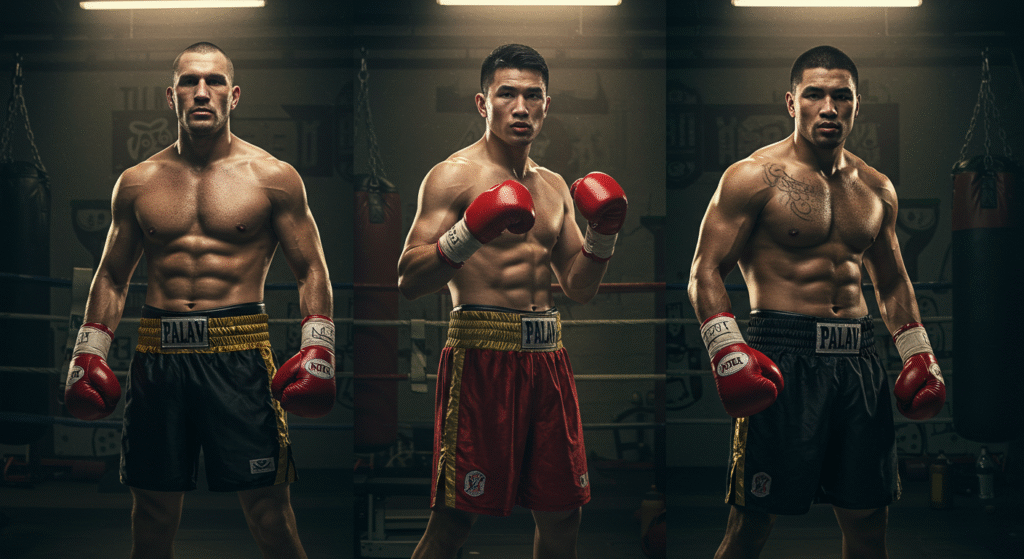The Ultimate Guide to Boxing Weight Classes and Divisions

Why Boxing Categories by Weight Matter
In the thrilling world of boxing, where speed, power, and strategy collide, one fundamental aspect ensures fairness and exciting matchups: boxing categories by weight. These divisions exist to level the playing field, preventing significantly larger and heavier fighters from overpowering smaller opponents simply due to their size advantage. Understanding the various boxing categories by weight is crucial for any boxing fan, allowing you to appreciate the unique skills and styles prevalent in each division. See latest rankings here.
This guide will take you through all the current recognized boxing categories by weight, providing you with the official limits and a glimpse into the characteristics of fighters who typically compete in each.
The Current Boxing Weight Divisions (Lowest to Highest):

- Minimumweight (or Strawweight): Up to 105 pounds (47.6 kg). Fighters in this division are often lightning-fast and possess impressive stamina. Notable champions include Ricardo López and Knockout CP Freshmart.
- Light Flyweight (or Junior Flyweight): Over 105 lbs (47.6 kg) to 108 lbs (49.0 kg) – Agile and quick fighters. Famous boxers: Ricardo López, Kenshiro Teraji
- Flyweight: Over 108 lbs (49.0 kg) to 112 lbs (50.8 kg) – Known for footwork and combinations. Famous boxers: Jimmy Wilde, Manny Pacquiao (early career)
- Super Flyweight (or Junior Bantamweight): Over 112 lbs (50.8 kg) to 115 lbs (52.2 kg) – Technical and exciting division. Famous boxers: Román “Chocolatito” González, Naoya Inoue
- Bantamweight: Over 115 lbs (52.2 kg) to 118 lbs (53.5 kg) – Fast fighters with knockout power. Famous boxers: Eder Jofre, Nonito Donaire
- Super Bantamweight (or Junior Featherweight): Over 118 lbs (53.5 kg) to 122 lbs (55.3 kg) – Speed and KO blend. Famous boxers: Guillermo Rigondeaux, Israel Vázquez
- Featherweight: Over 122 lbs (55.3 kg) to 126 lbs (57.2 kg) – Historic and competitive class. Famous boxers: Willie Pep, Salvador Sánchez
- Super Featherweight (or Junior Lightweight): Over 126 lbs (57.2 kg) to 130 lbs (59.0 kg) – Balanced fighters. Famous boxers: Alexis Argüello, Shakur Stevenson
- Lightweight: Over 130 lbs (59.0 kg) to 135 lbs (61.2 kg) – Legendary division. Famous boxers: Roberto Durán, Vasiliy Lomachenko
- Super Lightweight (or Junior Welterweight): Over 135 lbs (61.2 kg) to 140 lbs (63.5 kg) – Strong, sharp punchers. Famous boxers: Aaron Pryor, Josh Taylor
- Welterweight: Over 140 lbs (63.5 kg) to 147 lbs (66.7 kg) – Glamour division with elite talent. Famous boxers: Sugar Ray Leonard, Floyd Mayweather Jr.
- Super Welterweight (or Junior Middleweight): Over 147 lbs (66.7 kg) to 154 lbs (69.9 kg) – Transitional weight class. Famous boxers: Thomas Hearns, Jermell Charlo
- Middleweight: Over 154 lbs (69.9 kg) to 160 lbs (72.6 kg) – Iconic with all-time greats. Famous boxers: Marvin Hagler, Gennady Golovkin
- Super Middleweight: Over 160 lbs (72.6 kg) to 168 lbs (76.2 kg) – Dynamic and modern division. Famous boxers: Joe Calzaghe, Canelo Álvarez
- Light Heavyweight: Over 168 lbs (76.2 kg) to 175 lbs (79.4 kg) – Power and skill mix. Famous boxers: Archie Moore, Sergey Kovalev
- Cruiserweight (or Junior Heavyweight): Over 175 lbs (79.4 kg) to 200 lbs (90.7 kg) – Big, mobile punchers. Famous boxers: Evander Holyfield, Oleksandr Usyk
Heavyweight: Over 200 lbs (90.7 kg) – The most recognized and powerful fighters. Famous boxers: Muhammad Ali, Mike Tyson
Understanding the Nuances of Boxing Categories by Weight
While the weight limits provide a clear structure, it’s important to remember that factors beyond just weight play a crucial role. Height, reach, and overall body composition can vary significantly even within the same boxing category by weight. Fighters often strategically choose a weight class that allows them to be strong and healthy while maintaining a competitive advantage. Learn how fighters cut weight.

Conclusion
The system of boxing categories by weight is essential for ensuring fair and exciting competition in the sport. By understanding these divisions, you can better appreciate the unique skills and challenges faced by fighters at different sizes and gain a deeper appreciation for the sweet science. Keep this guide handy as you follow your favorite boxers and explore the diverse landscape of professional boxing!
For official weight class rules, visit the USA Boxing weight divisions.